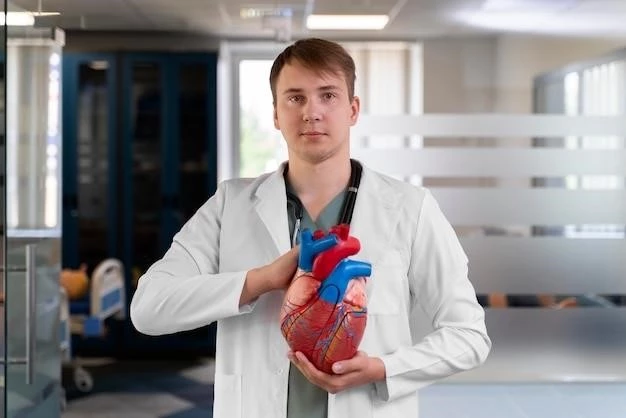Endomyocardial Fibroelastosis
Endomyocardial fibroelastosis is a rare disease affecting the heart muscle. Understanding this condition is crucial for early diagnosis and treatment in children. Explore the causes, genetic factors, symptoms, diagnosis, treatment options for heart failure, and long-term care.
Understanding Endomyocardial Fibroelastosis

Endomyocardial fibroelastosis (EFE) is a rare condition that primarily affects the heart muscle, leading to abnormal thickening and stiffening of the endocardium. This can result in increased pressure within the heart chambers, impacting its ability to pump blood effectively. EFE is often seen in children and can lead to severe complications if left untreated.
It is essential to grasp the underlying mechanisms of EFE to recognize symptoms early and initiate appropriate interventions. By understanding the pathology of EFE, healthcare providers can offer targeted care to mitigate its impact on the heart’s function; Stay informed about EFE to ensure timely detection and management, especially in pediatric patients where the disease can progress rapidly.
Causes and Genetic Factors
Endomyocardial fibroelastosis (EFE) is believed to have both genetic and acquired causes. While the exact etiology remains unclear, genetic factors play a significant role in predisposing individuals, especially children, to this condition. Mutations in specific genes involved in cardiac development and function may contribute to the development of EFE.
Environmental factors, such as viral infections during pregnancy, have also been linked to the development of EFE. It is vital for individuals with a family history of cardiac conditions or genetic heart disorders to undergo regular screenings and genetic counseling to assess their risk of EFE. Understanding the interplay between genetic predisposition and environmental triggers can help healthcare providers tailor treatment strategies and preventive measures for patients at risk of EFE.
Symptoms in Children
Recognizing the symptoms of endomyocardial fibroelastosis (EFE) in children is critical for early intervention and management. Common symptoms may include fatigue, poor feeding, rapid breathing, and failure to thrive. Children with EFE may also experience difficulty gaining weight, recurrent respiratory infections, and edema.
It is essential for parents and caregivers to monitor any signs of cardiac distress, such as cyanosis (bluish discoloration of the skin), excessive sweating, or irritability in children, as these could indicate underlying heart issues like EFE. Promptly seeking medical attention upon observing these symptoms is crucial for a timely diagnosis and initiating appropriate treatment to improve the prognosis of EFE in children.
Diagnosis and Identification
Diagnosing endomyocardial fibroelastosis (EFE) involves a comprehensive assessment that may include imaging tests such as echocardiography, cardiac MRI, and cardiac catheterization. These modalities help visualize the thickening of the endocardium and assess the heart’s structure and function. Additionally, genetic testing may be recommended to identify mutations associated with EFE.
Healthcare providers may also perform a thorough physical examination, review the patient’s medical history, and evaluate symptoms to aid in the diagnosis of EFE. Collaborating with pediatric cardiologists and genetic specialists can assist in accurately identifying EFE in children. Early detection through proper diagnostic protocols is key to implementing timely interventions and improving outcomes for pediatric patients with EFE.
Treatment Options for Heart Failure
Managing heart failure in individuals with endomyocardial fibroelastosis (EFE) requires a multidisciplinary approach aimed at improving cardiac function and quality of life. Treatment options may include medications to reduce heart workload, diuretics to alleviate fluid retention, and inotropic agents to enhance heart contractility.
In severe cases, surgical interventions such as heart transplant or ventricular assist devices (VADs) may be considered for individuals with advanced EFE and heart failure. Cardiac rehabilitation programs, dietary modifications, and lifestyle changes can complement medical treatments to optimize cardiac health. Working closely with a specialized healthcare team can help tailor a comprehensive treatment plan that addresses the unique needs of patients with EFE and heart failure.
Prognosis and Long-Term Care
The prognosis of individuals with endomyocardial fibroelastosis (EFE) varies depending on the severity of the condition, early diagnosis, and response to treatment. Long-term care for patients with EFE involves regular follow-up visits with healthcare providers to monitor heart function, adjust medications as needed, and assess overall well-being.
It is crucial for individuals with EFE and their caregivers to adhere to treatment plans, attend scheduled appointments, and communicate any new or concerning symptoms promptly. Engaging in a heart-healthy lifestyle, including maintaining a balanced diet, regular physical activity, and avoiding smoking, can support long-term cardiac health for patients with EFE.
